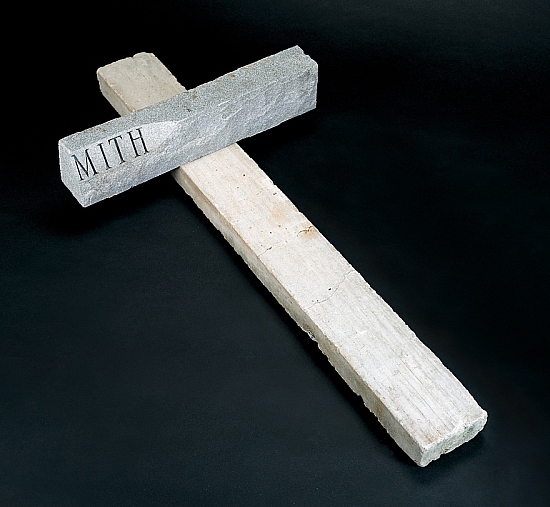In Mith a crucifix is laid low, vandalized or simply toppled because of imbalance. The Christian cross originated as an emblem of the low—as capital punishment for thieves—before ascending to exalted status; now the crucifixion is returned to the dust, like a scoured animal skeleton on the plains or desert. Mith consists of nothing more than a broken granite headstone placed on a concrete construction beam. The headstone once read "Smith" before the S cleaved away. High and low materials intersect: fine granite rests upon pedestrian concrete. More powerfully still, Mith is the fission of language: Smith is the generic, anonymous surname that when sundered reveals a quasi-homonym, "mith."
Because "smith" is also the title of the metalworker, the smithy, Mith is a lamentation for Holley's broken region, an area founded upon iron, steel, and mining industries and now decaying because of its dependence on vanished trades. But the smith is also a creator—he who makes molten metal into new forms. Smith the metalworking artisan works from the inside out; mith works from the outside in, breaking instead of melting. His Birmingham is a microcosm of black southern life, encompassing migration, urbanization, and industrialization, civil rights struggles, and ensuing post-industrialization and globalization. For Holley, paradises are always already lost, as in Clement Wood's "problem" novel, Nigger (1922), about a black family that leaves rural life to move to Birmingham, only to find more misery. Blacks, seeking anything better than what they left, nomadically arrive into circumstances of vanished "emancipation" which, in Holley's art, is the life force, an endlessly deferred quest for liberation. —Paul Arnett
